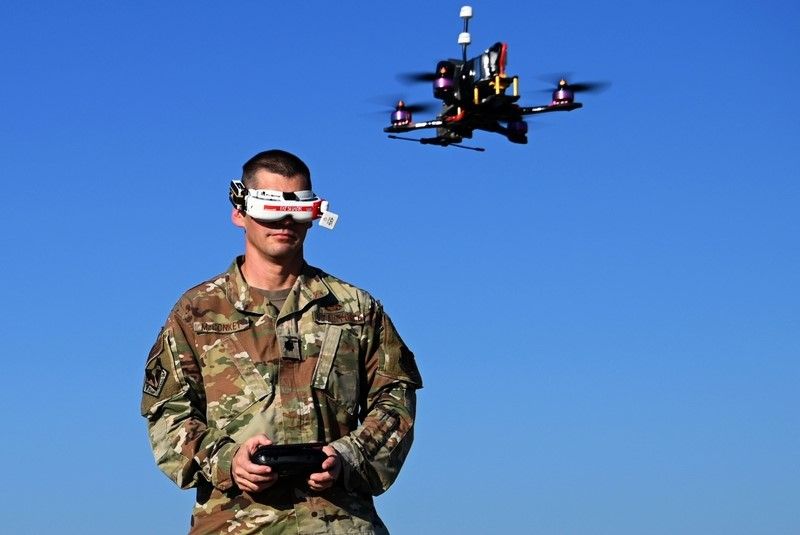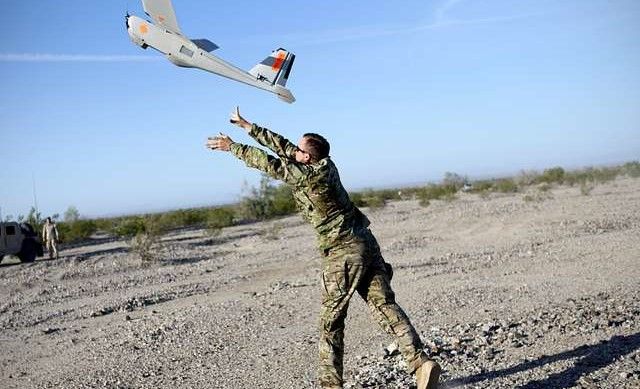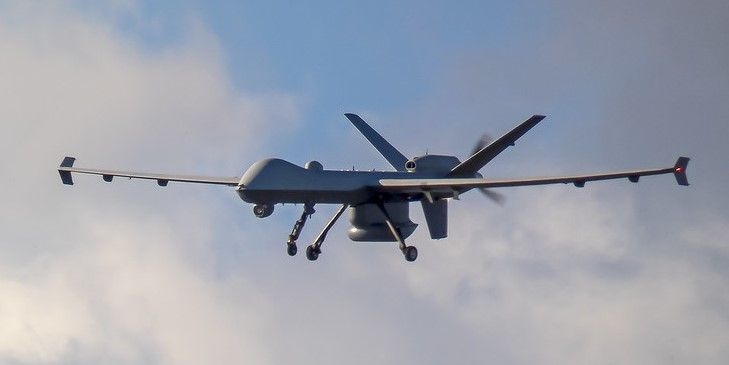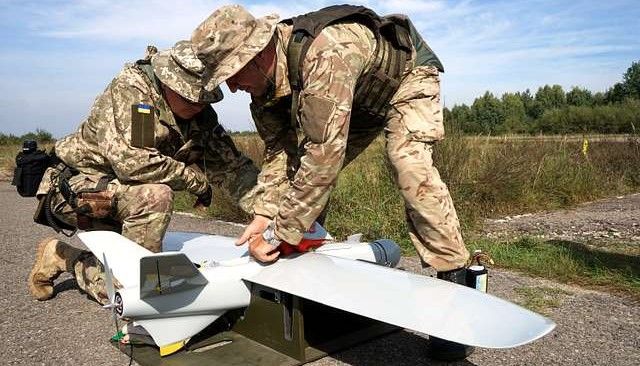Will Drones Become Standard Issue for Infantry Platoons?
A glance at how the US military is looking to deploy drones as a cost-effective way to bolster infantry fire power.

Despite all the technological advances of the last few decades, military strategy is still primarily based on the idea of foot soldiers capturing and holding ground. Even though they are more than one hundred years apart, the battlefields in Ukraine are almost identical to those of the First World War.
The single greatest change to the scenario has been the very recent proliferation of drones. Working as a low cost, low risk tool, drones function in a variety of roles, such as observation and reconnaissance, in tank and trench busting, artillery spotting, and even (through smaller, first-person view drones) in tracking and killing individual solders on the battlefield.
Consequently, military planners are looking at ways to immerse this innovative technology into everyday tactics in the hope of integrating drones seamlessly into platoons in the same way that radios and machine guns are already commonplace.

This glimpse into the future of how drones will function alongside conventional soldiers was recently highlighted when three arms manufacturers were selected to take part in its light loitering munitions program which, according to the Marine Corps Times, “seeks to equip small units with an armed drone for over-the-horizon fire missions.”
“AeroVironment, Anduril Industries and Teledyne FLIR will compete for the potential $249 million, five-year contract for the Organic Precision Fires-Light,” the report notes. Describing the cohesion of drones in close knit cooperation with ground troops as, “… a man-packable, armed loitering drone for rifle squads and platoons.”
Most notable for their built-in warheads, the drones will act as a speedy way to apply firepower to a defensive position or enemy vehicle, rather than wasting vital minutes in contacting the artillery or air force for support.
“This is extremely significant at small and large unit levels, [as it] pushes the effective range out further,” noted Assistant Commandant Gen. Christopher Mahoney of the tests being conducted. Adding that, the light system was “performing very well.”

It is a position which is also being adopted by the US Army which has tasked Gainey’s Robotics and Autonomous Systems with supplying selected platoons with commercially available, small, first-person-view drones.
“We're going to see robotics inside the formation, on the ground and in the air,” said Army Chief of Staff Randy George.
While the integration process will involve intensive training and adaption by both soldiers and commanders, as well as ongoing adjustments to field tactics, the benefits are clear, especially in light of how the war in Ukraine is playing out.
“No longer is a drone just a safety net,” explains Capt. Adam Johnson, commander of Gainey Company, an experimental unit within the 82nd Airborne that acts as a central location for testing new strategies and technology. “They have a purpose.”
Due to the drones’ low cost, the strategy has considerable support from the Pentagon. Earlier plans for increasing the use of drones across all branches of the military have focused on using specialist military hardware, such as predator drones, which cost millions of dollars. Consequently, US military strategists are wary of being out gunned by a potential adversary such as China, which due to its manufacturing-base advantage can produce such drones much quicker and for a fraction of the cost.
By looking at ways to modify commercial, portable drones, military chiefs are hoping to gain the benefits of the new technology where it is most needed (with troops on the ground) without great expense.

This is not to say that the integration process has been smooth.
Original plans to train infantry soldiers into becoming drone operators were largely unsuccessful due to the average soldier’s limited technical knowledge and inexperience with drones.
“We don't have the time to sit down and teach people in depth if they have no experience,” said Johnson. “It's hard to get them over that first six-foot wall.”
As a result, the unit started assigning troops who were highly skilled in permanent roles as designated drone operators inside each platoon. This has helped considerably, although the possibility of assigning drone operating units to work alongside the infantry platoons (as in the Ukrainian army) has not been ruled out. However, some commanders fear that this would separate the training of the drone teams from the regular troops, creating a non-cohesive barrier between the two, much as the Army’s medical platoons are already distinct.

The placing of loitering munitions has also come under debate, with some commanders preferring to spread the drones out along the front of a formation as the best way to quickly engage the enemy. Johnson, however, believes that this can be detrimental, as it risks having drone operators, “clawing to get targets prosecuted.”
As a result, others have attempted to clump the drone operators closer together under the instruction of a scout platoon. This is most notable in the 101st Airborne, where the division is experimenting with “incorporating drones into its new Multi-Functional Reconnaissance Company, or MFRC.” This has allowed troops to lay down early fire on an enemy as well as gaining reconnaissance data before regular ground troops move in on a target.
Other groups are using less formal programs to hone soldiers' drone flying skills. A result of new US Army guidelines which allow more independence for lower-level commanders to purchase commercial drones and drone parts for integration in their units.
Given the overall proliferation of drones in so many walks of life, their integration into infantry platoons is not just a possibility but a necessity for modern warfare. The ongoing advances in small unmanned aerial systems (sUAS) have demonstrated their effectiveness in reconnaissance, target acquisition, and direct engagement, as seen in conflicts like Ukraine and elsewhere.
By leveraging inexpensive, commercially available drones and fostering bottom-up innovation, the U.S. Army can close the sUAS experimentation gap and enhance operational effectiveness. As these technologies evolve, drones will undoubtedly become standard issue, transforming the battlefield and redefining infantry tactics for the future.
You may also enjoy: French Commander Envisages the End of the Small Drone Wars or Russian Glide Bombs are Shifting the Ukrainian Tide of War

